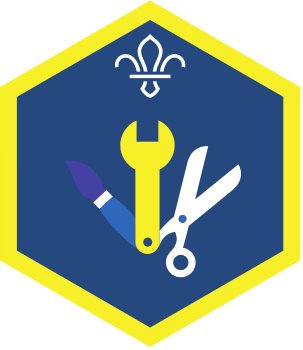
Design your own comic book
You’ll need
- Coloured pens or pencils
- A4 paper
- Comic strip templates
- Other craft items (optional)
- Printed pictures to copy (optional)
Before you begin
- Use the safety checklist to help you plan and risk assess your activity. Additional help to carry out your risk assessment, including examples can be found here. Don’t forget to make sure all young people and adults involved in the activity know how to take part safely.
- Make sure you’ll have enough adult helpers. You may need some parents and carers to help if you’re short on helpers.
Setting up this activity
- Make sure there are enough comic templates for everyone. You may want to have some spare copies too.
- You might want to have some examples of comic books or magazines for people to look at.
Planning your story
- Gather everyone together and tell them that they’re going to create their own comic book. You could ask if people have read comic books before or have any favourite comic characters.
- Ask anyone if they know any things that people might see in a comic book.
- Tell everyone that a comic is about storytelling. It doesn’t matter how well drawn it is or if any mistakes happen. You can use stick figures, collage or stickers if you want to.
- Give out some pens and pencils, the comic strip template and some plain paper. People can use the template provided or make their own design on the plain paper.
- Tell everyone that you’re all going come up with a story. You may want to choose a theme.
- Once you have an idea for your story, think about what images will best help to tell it. Each image will go in a panel, which is like an empty square on a page. The ‘Create your story’ steps will help people to the form the structure of their story. You can ask your friends for help, ideas or suggestions as you go along, or ask for their feedback.
Create your story
- First, people should choose a main character and imagine where they live, which will be the story’s setting. They should draw their character and setting in the first two panels of their comic. What will the character look like? What will they wear? What features will they have? Will they have a job? Could they add accessories which are important or special to them?
- Next, introduce a problem or adventure for their character. Some good questions could be:
- What do you want to happen in your comic book?
- Who is it about?
- Where is it taking place?
- Is it a comedy or an action story?
- Now, decide what happens next. Does the character have a problem they have to face? Do they meet a friend, a stranger or an enemy? Are they in trouble? Is there something they need to find? You can draw what happens.
- Thankfully, something good happens, so draw what happens next. They could ask for help, find what they need or have someone save them. How does the main character ask for help? Do they have friends to help them? Do they find what they need?
- Now, the character(s) continues in their journey. They could meet another character, fix the problem or do something really exciting. People should draw what happens and how any problems are getting resolved.
- Finally, draw what happens at the end. You should include any possible solutions and add a positive ending.
- Remember, people can create their own stories and it doesn’t need to follow this format. However, it’s important for stories to have a beginning, a middle and an end to help with structure.
- Next, people can add speech and colour to their comics. People may want to add some more boxes, continue the story or create a cover for their comic.
- Finally, gather back together at the group. Anyone who’s happy and comfortable to could share their comic strip with the group.
Top tips for comic books:
- Not all comics have speech bubbles and some comics have no words at all. If you want to add speech, narration or thoughts to your story, then you need to have a think about where your words will go on the page.
- Make sure to marking out space for text and speech bubbles before you start drawing. It’s easiest to put speech at the top or bottom of a panel and to keep the bubble close to the character who's speaking, with the bubble’s tail being pointed toward their mouth, so we know who’s speaking.
- Remember that every panel should move the story along – you don’t want to have the same image over and over again!
- You could try writing a very simple script, planning out what each image will look like and what words it will have around it.
- If you're drawing your own frames, you can get creative with the layout - all the squares don't have to be the same size and they don’t just need to be square either.
Reflection
This activity was all about drawing a comic book. How did you think of your ideas? Did you share or bounce ideas from other people? Was it easy to bring your ideas to life? What was it like trying to fit the ideas into the boxes and get the story across clearly? Did you have any problems when drawing or bringing the ideas to life?
You may want to ask if anyone is happy and comfortable to share their comic book with the group. What did people think of the story? Did you understand their idea? What do you think happens next?
Safety
All activities must be safely managed. You must complete a thorough risk assessment and take appropriate steps to reduce risk. Use the safety checklist to help you plan and risk assess your activity. Always get approval for the activity, and have suitable supervision and an InTouch process.
- Scissors
Supervise young people appropriately when they’re using scissors. Store all sharp objects securely, out of the reach of young people.
- Glue and solvents
Always supervise young people appropriately when they’re using glue and solvent products. Make sure there’s plenty of ventilation. Be aware of any medical conditions that could be affected by glue or solvent use and make adjustments as needed.
Adapt the level of prompts groups are given – they could use the templates provided, be given more detailed prompts (such as ideas for problems and solutions), or use blank sheets of paper to come up with their own story entirely.
- You could provide printed images, scissors and glue so that people can collage as well as, or instead of, drawing.
All Scout activities should be inclusive and accessible.

